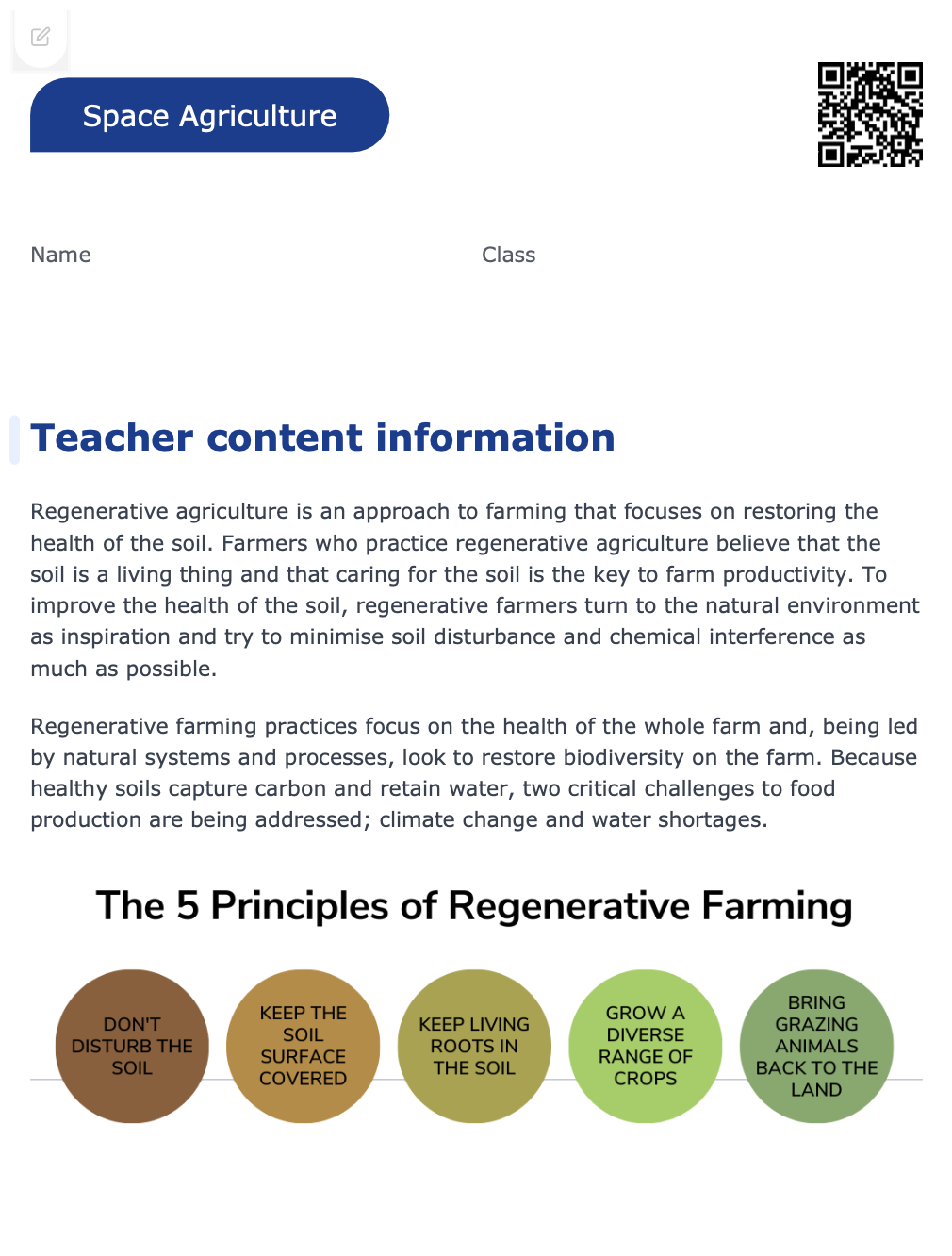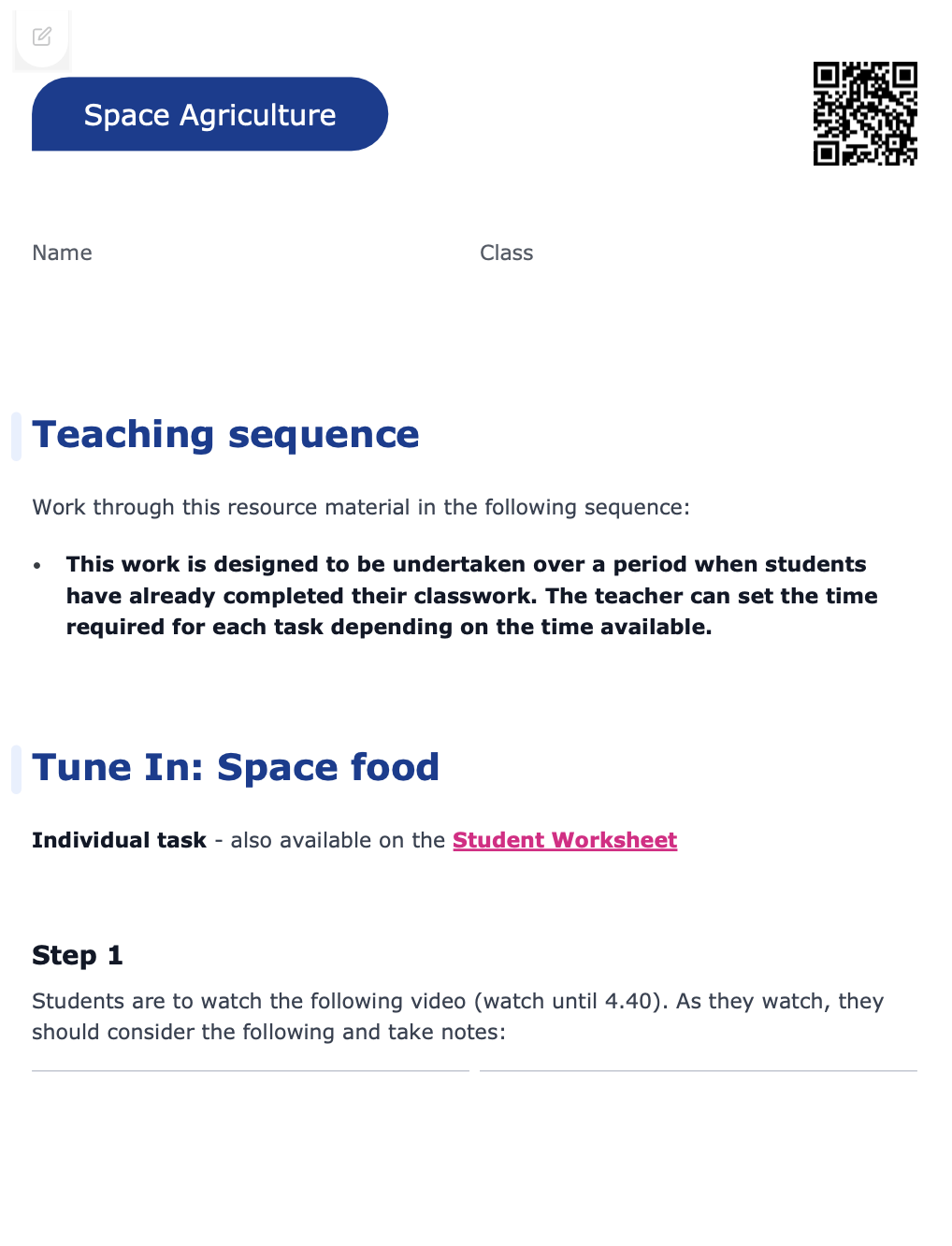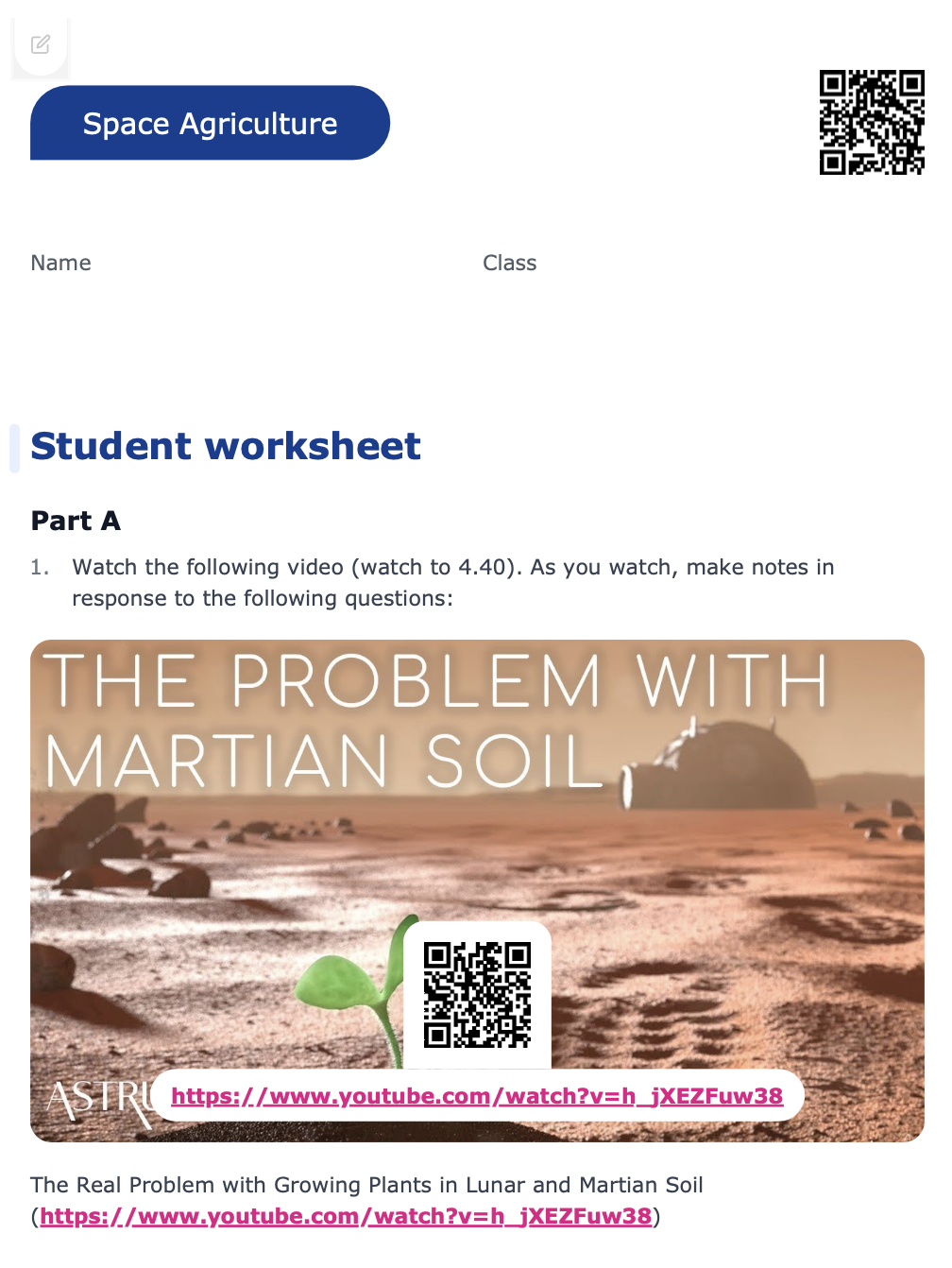Lesson summary
Students explore the conditions on different planets for agriculture and investigate breakthroughs in food for astronauts and food production in space.
Note: This lesson is designed to be an ongoing project that students can begin, pick up and put down throughout this unit so that those students who progress much more quickly through the mainstream lessons than others can complete this ongoing work.
Learning intentions:
Students will...
- understand the soil, water and air conditions on different planets in our solar system (specifically Mars)
- identify what food is eaten on the international space station and how the astronauts are provided with food
- explore the current advancements in food that can be eaten in space
- explore the current advancements in food that can be grown in space.
Success criteria:
Students can...
- describe the opportunities and challenges to space agriculture, including the potential for regenerative farming practices to help grow food in space.
Lesson guides and printables
Curriculum links
Select your curriculum from the options below.
Lesson details
Skills
This lesson is designed to build students’ competencies in the following skills:
- creativity
- curiosity
Curriculum Mapping
Australian Curriculum (v9.0) content descriptions - Geography Year 9
Students learn to:
- understand challenges to sustainable food production and food security in Australia and appropriate management strategies (AC9HG9K04)
General capabilities: Literacy, Critical and Creative Thinking
Cross-curriculum priority: Sustainability.
Relevant parts of Year 9 Geography achievement standards:
Students analyse the interconnections between people and places and environments. Students analyse strategies to address a geographical phenomenon or challenge using environmental, social or economic criteria.
UN Sustainable Development Goals
Target 2.4: By 2030, ensure sustainable food production systems and implement resilient agricultural practices that increase productivity and production, that help maintain ecosystems, that strengthen capacity for adaptation to climate change, extreme weather, drought, flooding and other disasters and that progressively improve land and soil quality
Target 15.3: By 2030, combat desertification, restore degraded land and soil, including land affected by desertification, drought and floods, and strive to achieve a land degradation-neutral world
Resources Required
- internet access
- laptop
- Letter Writing Tips
- Student Worksheet - one for each student
Additional Info
Level of teacher scaffolding: Low - teacher will need to oversee students as they work through the lesson and support assisted students as required.
Special thanks to:

This lesson has been developed with the support of the Macdoch Foundation.
Cool.org's curriculum team continually reviews and refines our resources to be in line with changes to the Australian Curriculum.




Welcome back!
Don't have an account yet?
Log in with:
Create your free Cool.org account.
Many of our resources are free, with an option to upgrade to Cool+ for premium content.
Already have an account?
Sign up with:
By signing up you accept Cool.org's Terms and Conditions(Opens in new tab) and Privacy Policy(Opens in new tab).